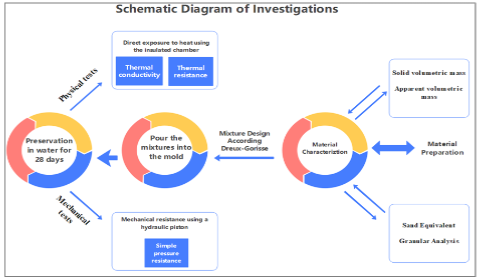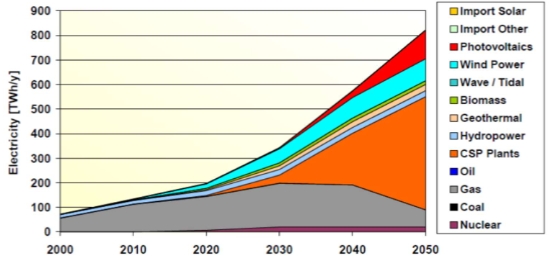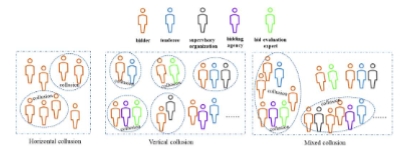Assessing seismic risk in the built environment of Istanbul: High-resolution hazard mapping and ground motion analysis in the sea of Marmara region
Abstract
This research scrutinizes the seismic threat looming over Istanbul, potentially subject to a substantial earthquake. We analyze six plausible earthquake scenarios, utilizing six ground motion prediction equations (GMPEs), to forge high-resolution seismic hazard maps. These maps reveal not only peak horizontal ground accelerations but also spectral acceleration values across varying temporal frames, integrating the amplification effects of softer sediments. Our approach delineates that Istanbul’s western shoreline faces heightened risk, with median spectral accelerations at 0.3 s approaching 1 g, signifying intense shaking potential. In contrast, the area encompassing the financial district exhibits lower values, around 0.3 g. The granularity of these findings lays bare the seismic vulnerabilities of the region, offering a window into the risks and potential damages facing this bustling metropolis. This enhanced understanding paves the way for strategic urban planning and risk mitigation efforts aimed at safeguarding Istanbul’s populace and infrastructure. This article succinctly condenses our study’s pivotal conclusions, presenting a clarion call for proactive measures to diminish earthquake impacts on this dynamic urban landscape.
References
[1]Kalkan E, Gulkan P, Yilmaz N, et al. Reassessment of probabilistic seismic hazard in the Marmara Region. Bulletin of the Seismological Society of America 2009; 99(4): 2127–2146. doi: 10.1785/0120080285
[2]Smith AD, Taymaz T, Oktay F, et al. High-resolution seismic profiling in the Sea of Marmara (northwest Turkey): Late Quaternary sedimentation and sea-level changes. Geological Society of America Bulletin 1995; 107(8): 923–936. doi: 10.1130/0016-7606(1995)107<0923: hrspit>2.3.co, 2
[3]Parke, Minshull, Anderson, et al. Active faults in the Sea of Marmara, western Turkey, imaged by seismic reflection profiles. Terra Nova 1999; 11(5): 223–227. doi: 10.1046/j.1365-3121.1999.00248.x
[4]Okay AI, Kaşlılar-Özcan A, İmren C, et al. Active faults and evolving strike-slip basins in the Marmara Sea, northwest Turkey: A multichannel seismic reflection study. Tectonophysics 2000; 321(2): 189–218. doi: 10.1016/s0040-1951(00)00046-9
[5]Hubert-Ferrari A, Barka A, Jacques E, et al. Seismic hazard in the Marmara Sea region following the 17 August 1999 Izmit earthquake. Nature 2000; 404(6775): 269–273. doi: 10.1038/35005054
[6]Parsons T, Toda S, Stein RS, et al. Heightened odds of large earthquakes near Istanbul: An interaction-based probability calculation. Science 2000; 288(5466): 661–665. doi: 10.1126/science.288.5466.661
[7]Parsons T. Recalculated probability of M ≥ 7 earthquakes beneath the Sea of Marmara, Turkey. Journal of Geophysical Research: Solid Earth 2004; 109(B5). doi: 10.1029/2003jb002667
[8]Kalkan E, Wills CJ, Branum DM. Seismic hazard mapping of California considering site effects. Earthquake Spectra 2010; 26(4): 1039–1055. doi: 10.1193/1.3478312
[9]Wald DJ, Allen TI. Topographic slope as a proxy for seismic site conditions and amplification. Bulletin of the Seismological Society of America 2007; 97(5): 1379–1395. doi: 10.1785/0120060267
[10]Wells DL, Coppersmith KJ. New empirical relationships among magnitude, rupture length, rupture width, rupture area, and surface displacement. Bulletin of the Seismological Society of America 1994; 84(4): 974–1002. doi: 10.1785/bssa0840040974
[11]Armijo R, Meyer B, Navarro S, et al. Asymmetric slip partitioning in the Sea of Marmara pull-apart: A clue to propagation processes of the North Anatolian Fault? Terra Nova 2002; 14(2): 80–86. doi: 10.1046/j.1365-3121.2002.00397.x
[12]Armijo R, Pondard N, Meyer B, et al. Submarine fault scarps in the Sea of Marmara pull-apart (North Anatolian Fault): Implications for seismic hazard in Istanbul. Geochemistry, Geophysics, Geosystems 2005; 6(6). doi: 10.1029/2004gc000896
[13]Le Pichon X, Şengör AMC, Demirbağ E, et al. The active Main Marmara Fault. Earth and Planetary Science Letters 2001; 192(4): 595–616. doi: 10.1016/s0012-821x(01)00449-6
[14]Le Pichon X, Chamot-Rooke N, Rangin C, et al. The North Anatolian fault in the Sea of Marmara. Journal of Geophysical Research: Solid Earth 2003; 108(B4). doi: 10.1029/2002jb001862
[15]Harris RA. The 1999 Izmit, Turkey, Earthquake: A 3D dynamic stress transfer model of intraearthquake triggering. Bulletin of the Seismological Society of America 2002; 92(1): 245–255. doi: 10.1785/0120000825
[16]Pulido N, Ojeda A, Atakan K, et al. Strong ground motion estimation in the Sea of Marmara region (Turkey) based on a scenario earthquake. Tectonophysics 2004; 391(1–4): 357–374. doi: 10.1016/j.tecto.2004.07.023
[17]Poliakov ANB, Dmowska R, Rice JR. Dynamic shear rupture interactions with fault bends and off-axis secondary faulting. Journal of Geophysical Research: Solid Earth 2002; 107(B11). doi: 10.1029/2001jb000572
[18]Kame N, Rice JR, Dmowska R. Effects of prestress state and rupture velocity on dynamic fault branching. Journal of Geophysical Research: Solid Earth 2003; 108(B5). doi: 10.1029/2002jb002189
[19]Abrahamson N, Silva W. Summary of the Abrahamson & Silva NGA ground-motion relations. Earthquake Spectra 2008; 24(1): 67–97. doi: 10.1193/1.2924360
[20]Boore DM, Atkinson GM. Ground-motion prediction equations for the average horizontal component of PGA, PGV, and 5%-damped PSA at spectral periods between 0.01sand 10.0s. Earthquake Spectra 2008; 24(1): 99–138. doi: 10.1193/1.2830434
[21]Campbell KW, Bozorgnia Y. NGA ground motion model for the geometric mean horizontal component of PGA, PGV, PGD and 5% damped linear elastic response spectra for periods ranging from 0.01 to 10s. Earthquake Spectra 2008; 24(1): 139–171. doi: 10.1193/1.2857546
[22]Chiou BJ, Youngs RR. An NGA model for the average horizontal component of peak ground motion and response spectra. Earthquake Spectra 2008; 24(1): 173–215. doi: 10.1193/1.2894832
[23]Stafford PJ, Strasser FO, Bommer JJ. An evaluation of the applicability of the NGA models to ground-motion prediction in the Euro-Mediterranean region. Bulletin of Earthquake Engineering 2007; 6(2): 149–177. doi: 10.1007/s10518-007-9053-2
[24]Graizer V, Kalkan E. Ground motion attenuation model for peak horizontal acceleration from shallow crustal earthquakes. Earthquake Spectra 2007; 23(3): 585–613. doi: 10.1193/1.2755949
[25]Graizer V, Kalkan E. Prediction of spectral acceleration response ordinates based on PGA attenuation. Earthquake Spectra 2009; 25(1): 39–69. doi: 10.1193/1.3043904
[26]Akkar S, Aldemir A, Askan A, et al. 8 March 2010 Elazig-Kovancilar (Turkey) earthquake: Observations on ground motions and building damage. Seismological Research Letters 2011; 82(1): 42–58. doi: 10.1785/gssrl.82.1.42
[27]Kalkan E, Gülkan P. Site-dependent spectra derived from ground motion records in Turkey. Earthquake Spectra 2004; 20(4): 1111–1138. doi: 10.1193/1.1812555
Copyright (c) 2023 Erol Kalkan, Polat Gülkan

This work is licensed under a Creative Commons Attribution 4.0 International License.












